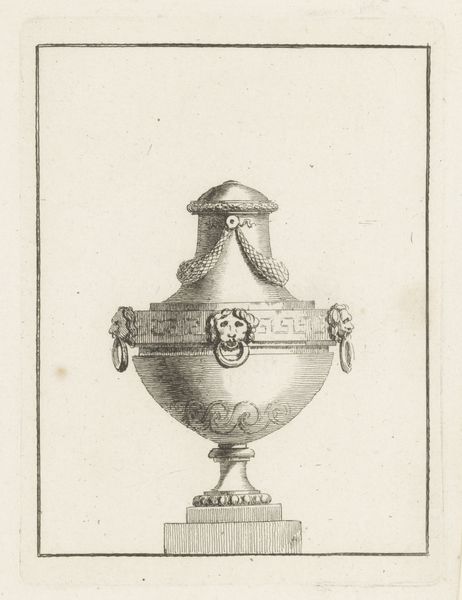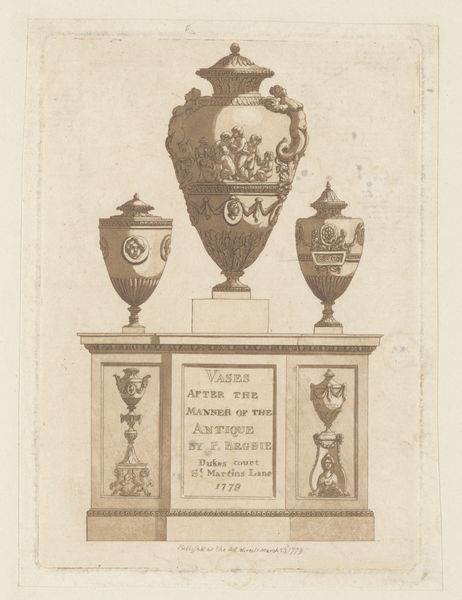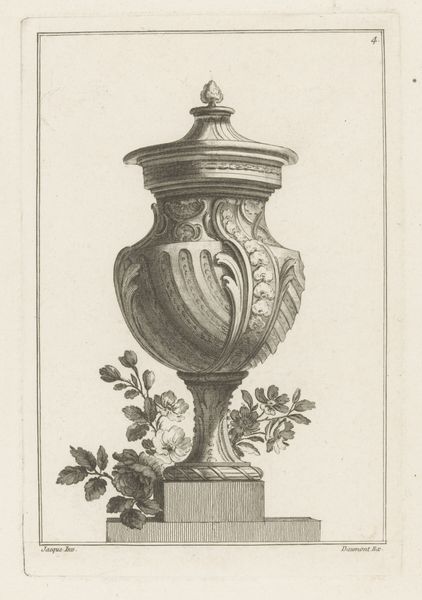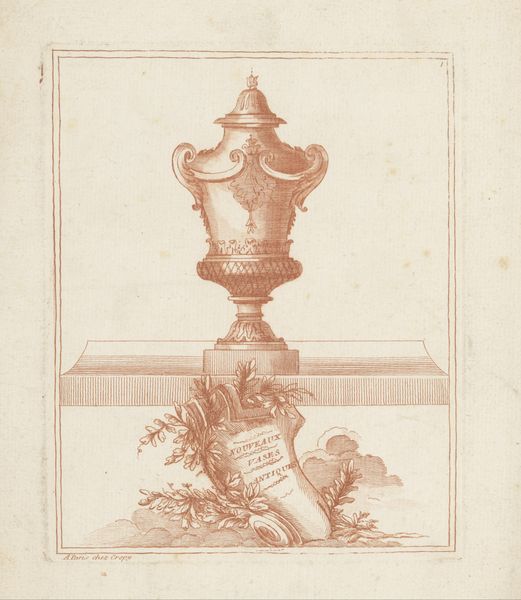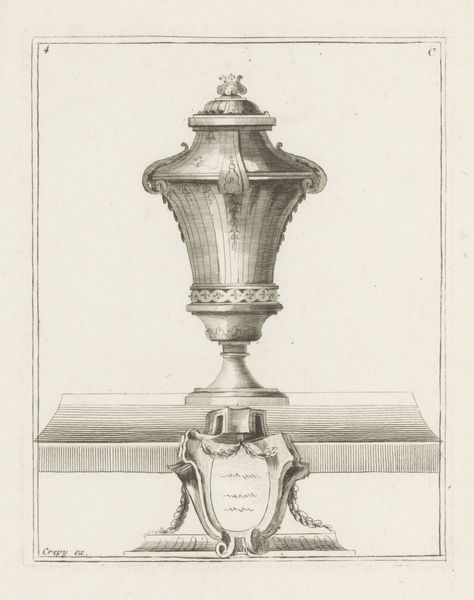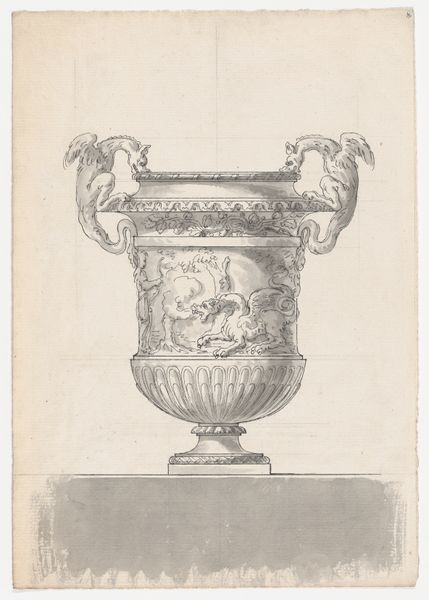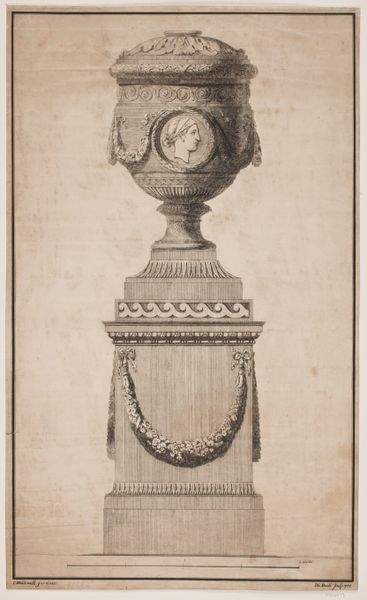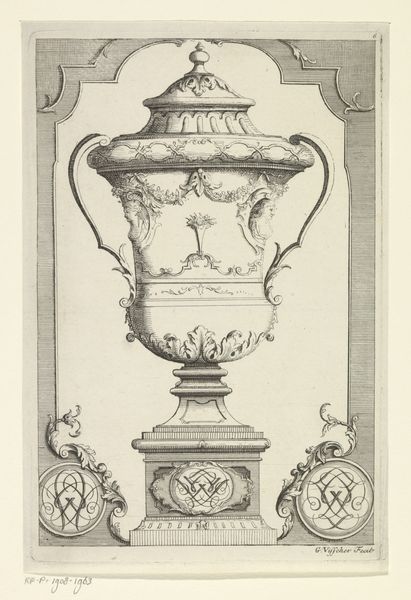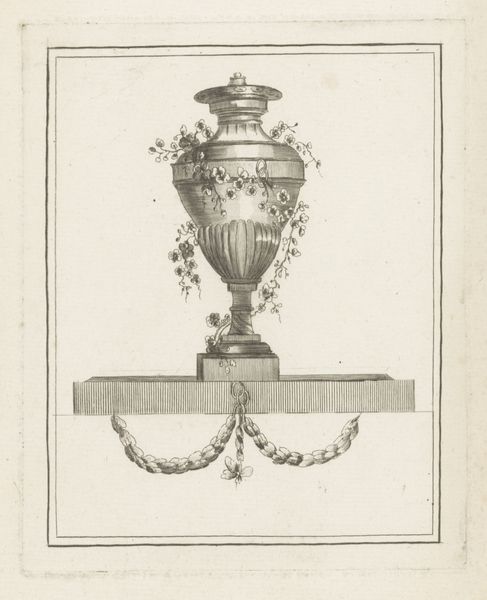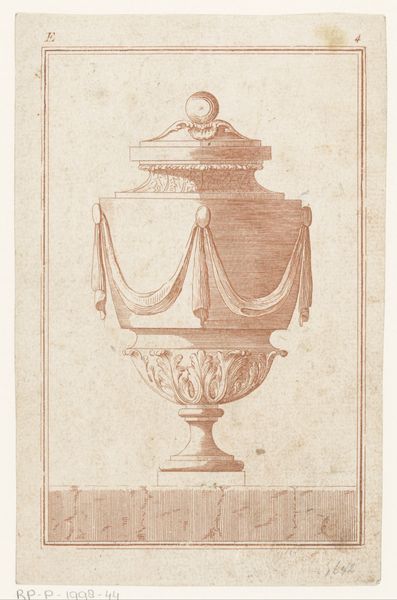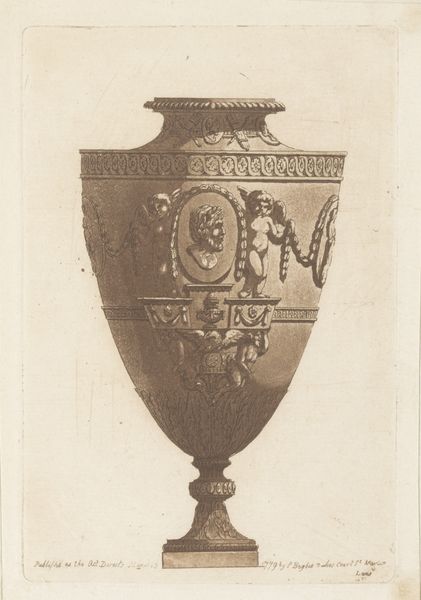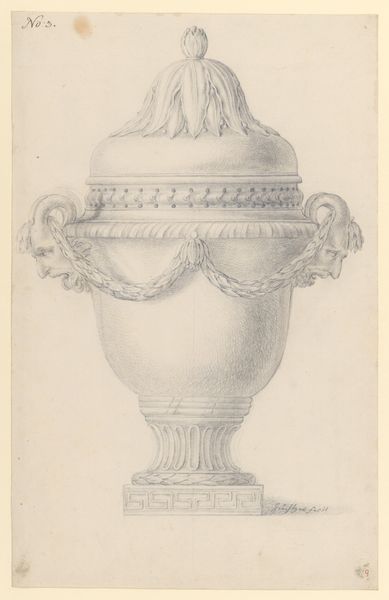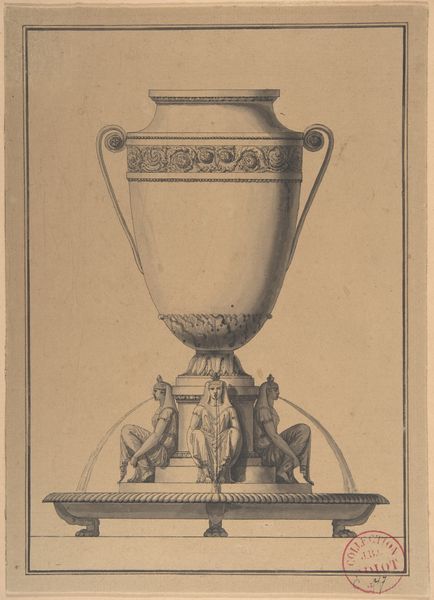
print, engraving
#
neoclacissism
# print
#
form
#
line
#
decorative-art
#
engraving
Dimensions: height 248 mm, width 184 mm
Copyright: Rijks Museum: Open Domain
Curator: Well, hello there! What do you make of this print? Editor: Stark. Minimalist. It makes me think about mass production techniques for luxury goods, even back then. Is it intended as a prototype? Curator: You've jumped straight into materials, which I love. This print, entitled "Vaas op voetstuk," which translates to "Vase on Pedestal", was created anonymously sometime between 1770 and 1780. The medium is engraving. And your intuition is sharp. Prints like this circulated widely as models for artisans producing fashionable objects. Editor: Ah, so not so much high art then as design blueprint. It shows how class distinctions are reinforced even through common household objects. Who could afford a vase reproduced after this engraving? Who would actually *make* the vase based on this? And where? Curator: Exactly! The original context would situate this work firmly within Neoclassicism—a visual manifestation of the Enlightenment, characterized by order and rationality. These engravings made design accessible… to a certain demographic, of course. Editor: Yet even within that order, there’s a tension. The delicate, precise lines of the engraving suggest control, yet the vase form itself—particularly that swooping handle!—hints at opulence. Curator: I see that tension playing out as the relationship between luxury and utility within this specific historic period, too. Remember that public museums and exhibitions were beginning to proliferate. Prints such as these, displayed in public institutions, were purveying ideas of design to a wider, middle-class, audience and fostering both their desires and their class aspirations. Editor: So this isn't just a pretty picture; it's part of a broader system of power dynamics manifested through design and made real by the physical work of artisans. I am captivated by how its fine lines belie an expansive societal system of desire, production, and inequity. Curator: I wholeheartedly agree! It also highlights how prints, like this, weren't simply passive images but active agents in disseminating style and influencing consumer culture. It's the physical product of a complex set of social factors, economic drivers, and the politics of taste, after all.
Comments
No comments
Be the first to comment and join the conversation on the ultimate creative platform.
